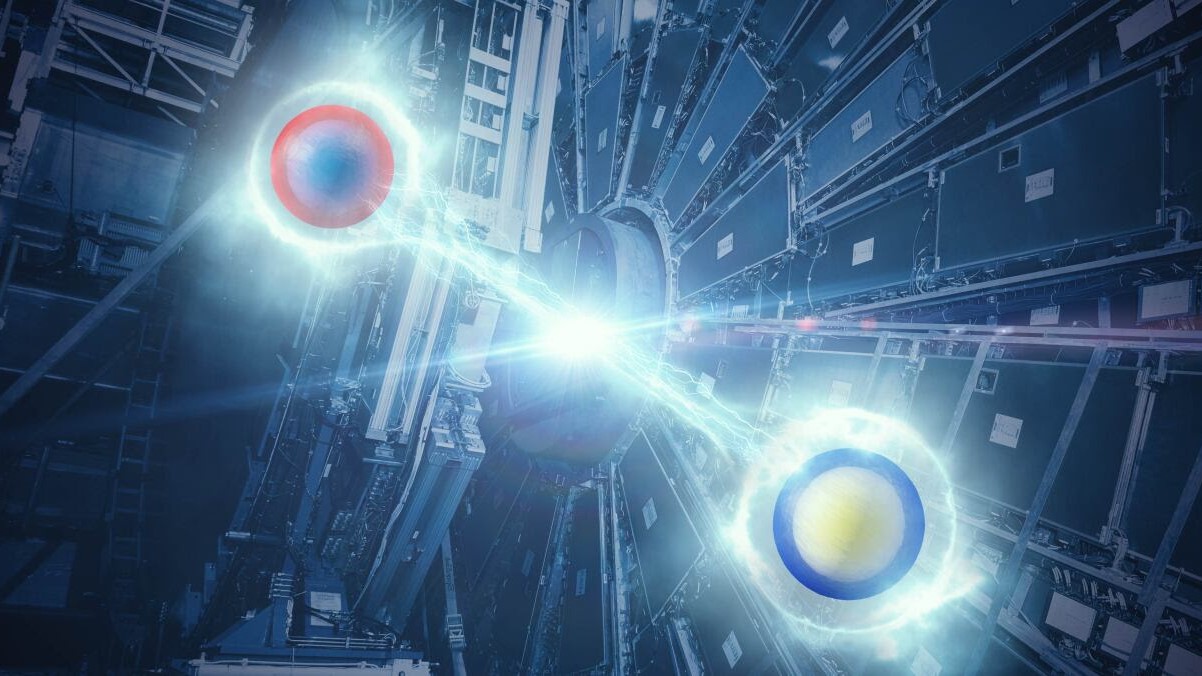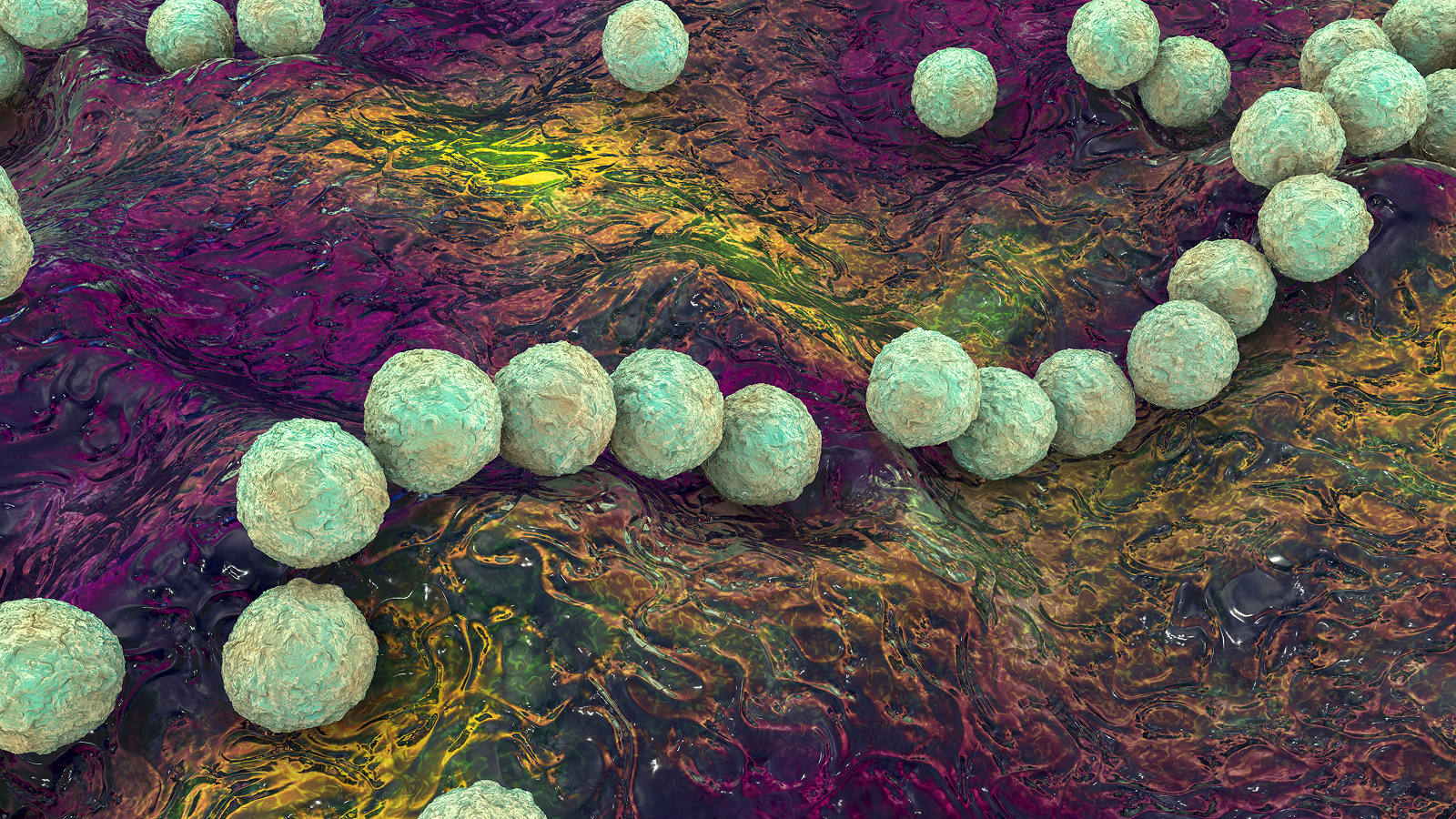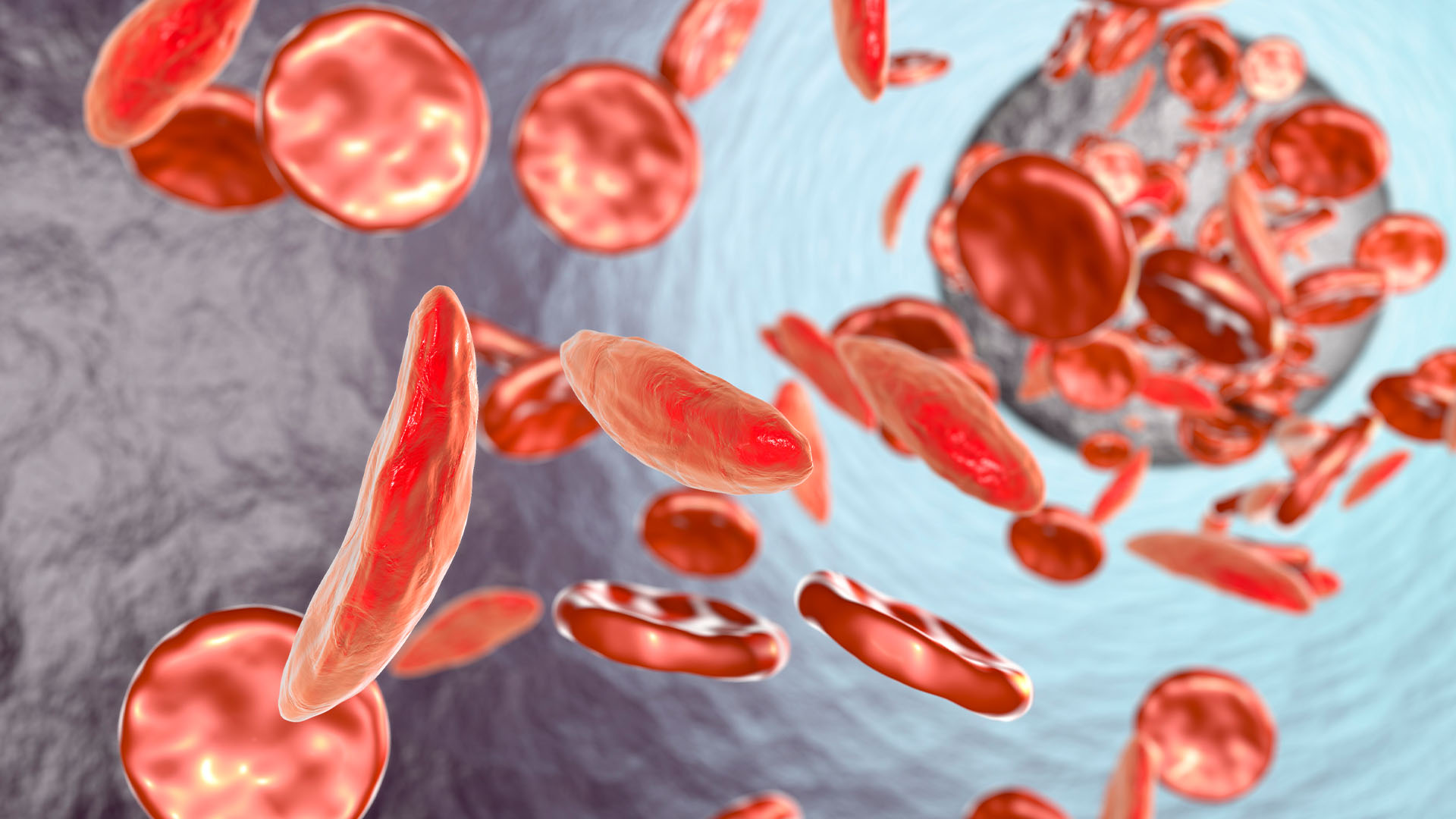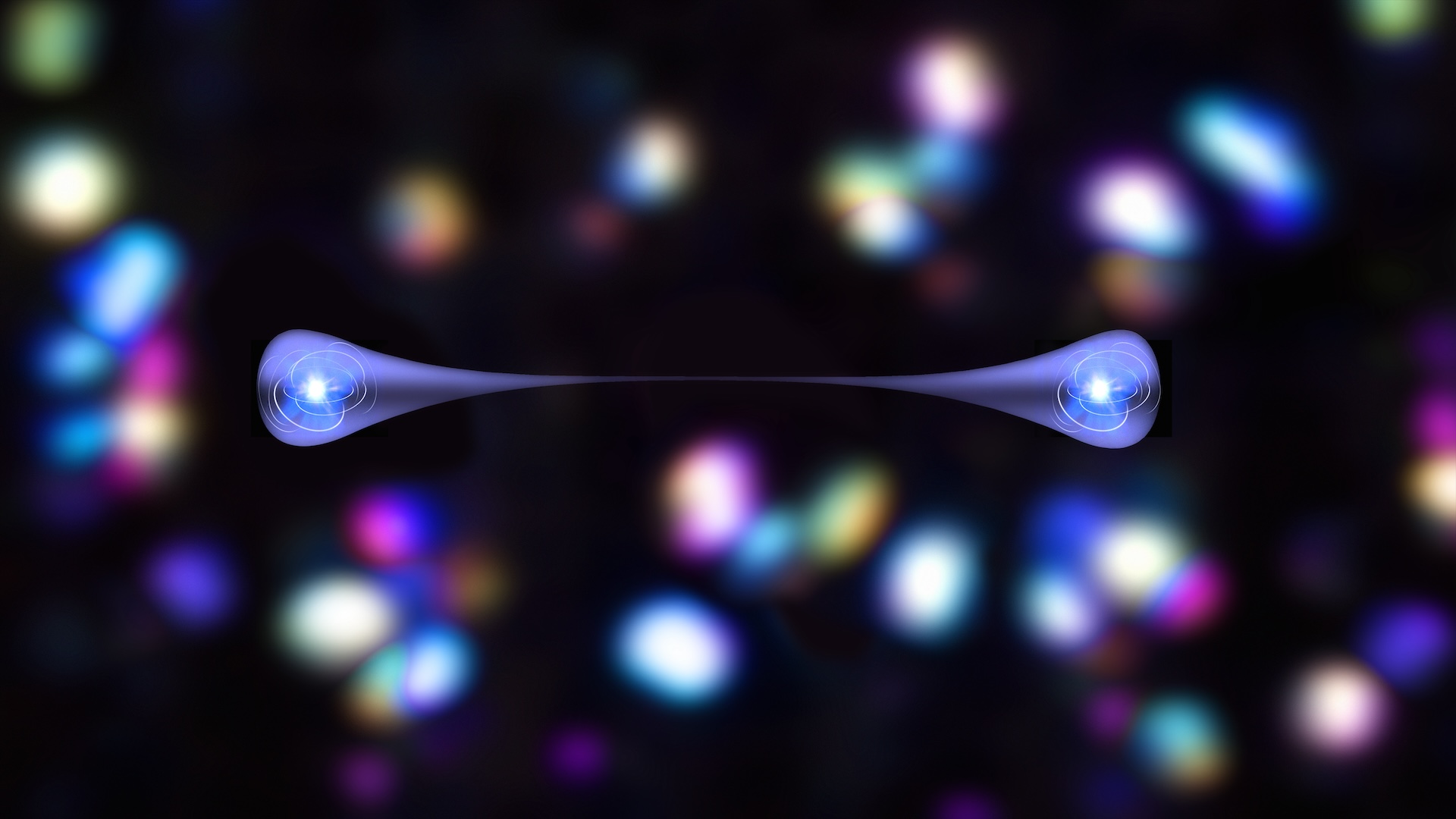1st-ever observation of 'spooky action' between quarks is highest-energy quantum entanglement ever detected
The discovery of two entangled quarks at the large Hadron Collider is the highest-energy observation of entanglement ever made.

Physicists at the world's largest atom smasher have observed two quarks in a state of quantum entanglement for the first time.
The observation, made at the Large Hadron Collider (LHC) at CERN, near Geneva, revealed a top quark — the heaviest fundamental particle — quantumly linked to its antimatter counterpart in the highest-energy detection of entanglement ever made. The researchers published their findings Sept. 18 in the journal Nature.
The ATLAS experiment (A Toroidal LHC Apparatus) is the largest detector at the LHC, and picks out the tiny subatomic particles created after beams of particles crash into each other at near light speeds.
"While particle physics is deeply rooted in quantum mechanics, the observation of quantum entanglement in a new particle system and at much higher energy than previously possible is remarkable," Andreas Hoecker, a spokesperson for the ATLAS experiment, said in an email statement. "It paves the way for new investigations into this fascinating phenomenon, opening up a rich menu of exploration as our data samples continue to grow."
Particles that are entangled have their properties connected to each other, so that a change to one instantaneously causes a change to another, even if they are separated by vast distances. Albert Einstein famously dismissed the idea as "spooky action at a distance," but later experiments proved that the bizarre, locality-breaking effect is indeed real.
Related: Heaviest antimatter particle ever discovered could hold secrets to our universe's origins
But there are many aspects of entanglement that remain unexplored, and the one between quarks is one of them. This is because the subatomic particles cannot exist on their own, instead fusing together into various particle "recipes" called hadrons. Mixtures of three quarks are called baryons — such as the proton and the neutron — and combinations of quarks and their antimatter opposites are called mesons.
Sign up for the Live Science daily newsletter now
Get the world’s most fascinating discoveries delivered straight to your inbox.
When individual quarks are ripped from hadrons, the energy used to extract them makes them immediately unstable, and they decay into branching jets of smaller particles in a process known as hadronization.
This means that to observe the entanglement of a top quark and an antiquark, scientists at the LHC's ATLAS and Compact Muon Solenoid (CMS) detectors had to pick out the distinct particles that they decayed into from billions of others. In particular, they looked for particles whose decay products were emitted at a distinct angle that occurs only between entangled particles.
By measuring these angles and correcting for experimental effects that may have changed them, the team observed entanglement between top particles with a large enough statistical significance to be considered real. Now that the entangled particles have been spotted, the scientists say they want to study them to further probe unknown physics.
"With measurements of entanglement and other quantum concepts in a new particle system and at an energy range beyond what was previously accessible, we can test the Standard Model of particle physics in new ways and look for signs of new physics that may lie beyond it," Patricia McBride, a spokesperson for the CMS experiment, said in the statement.

Ben Turner is a U.K. based staff writer at Live Science. He covers physics and astronomy, among other topics like tech and climate change. He graduated from University College London with a degree in particle physics before training as a journalist. When he's not writing, Ben enjoys reading literature, playing the guitar and embarrassing himself with chess.









